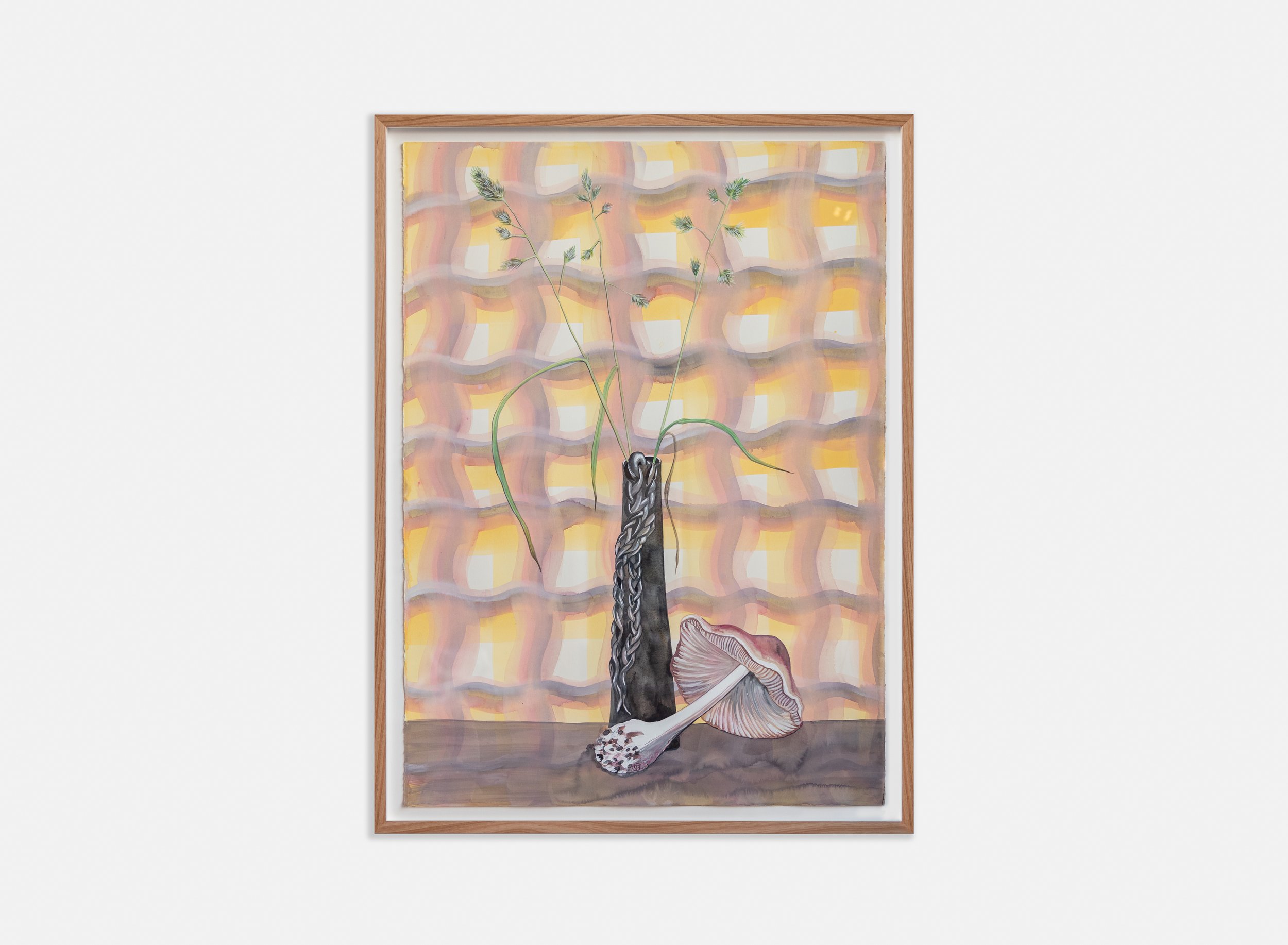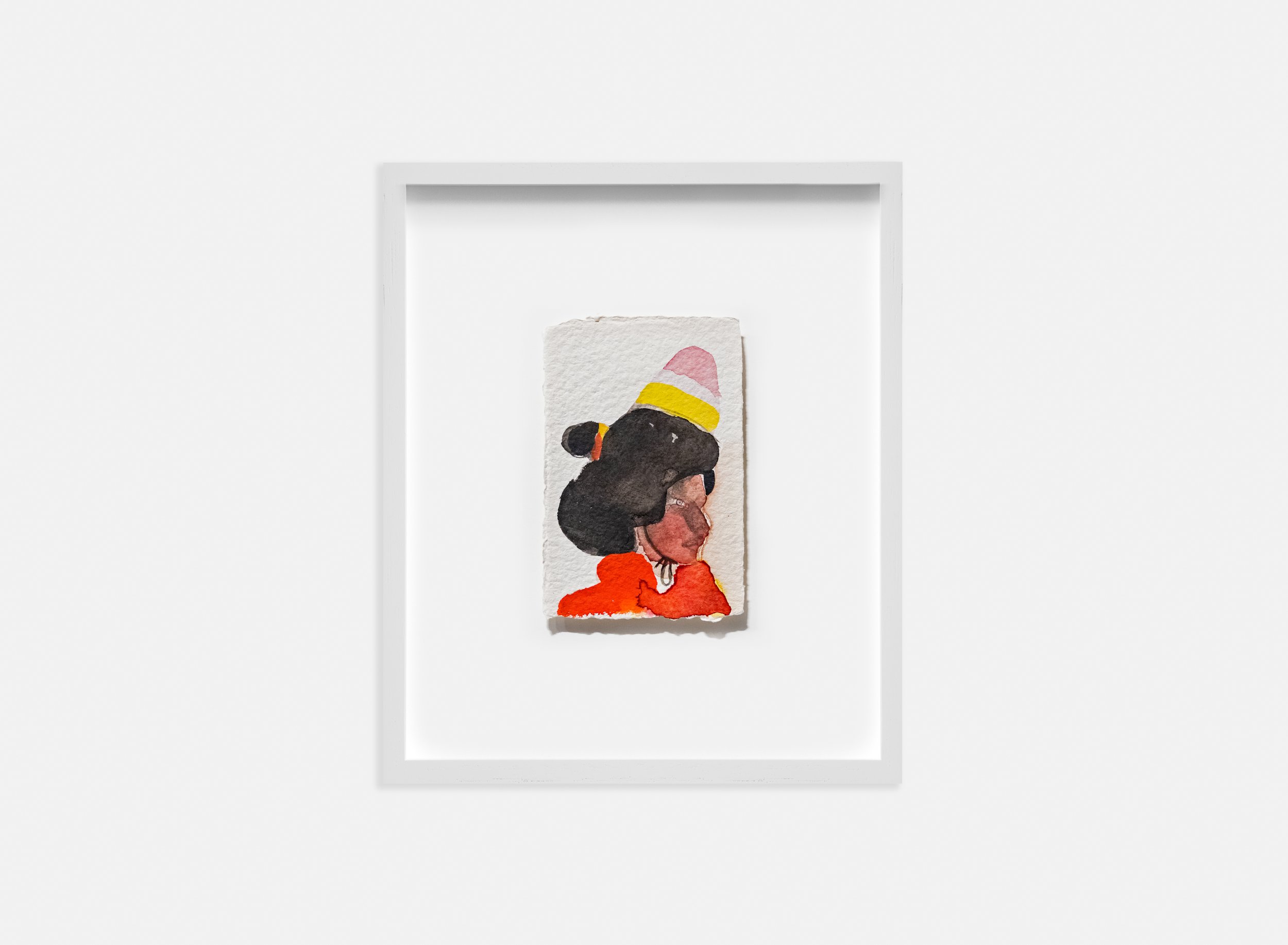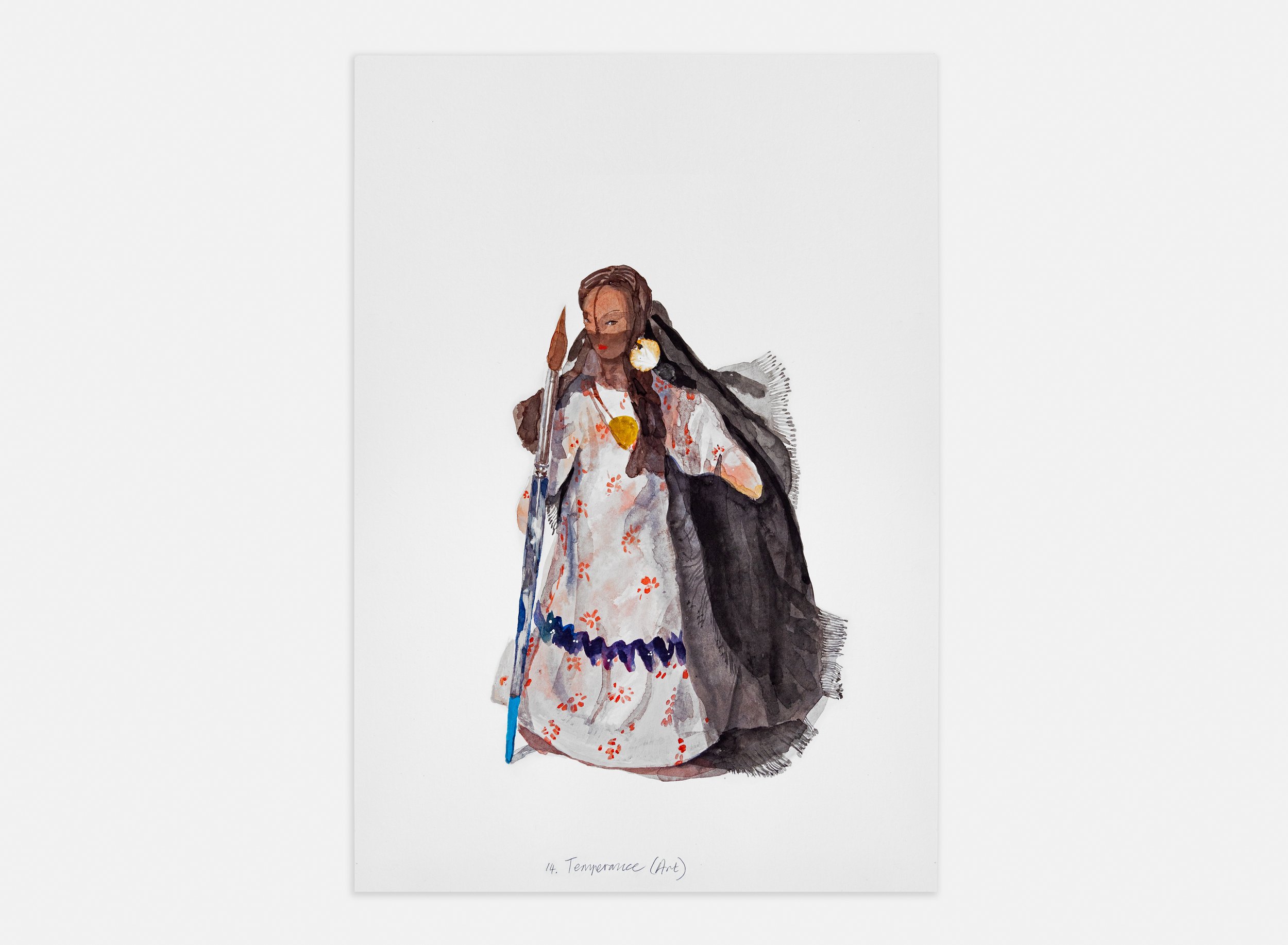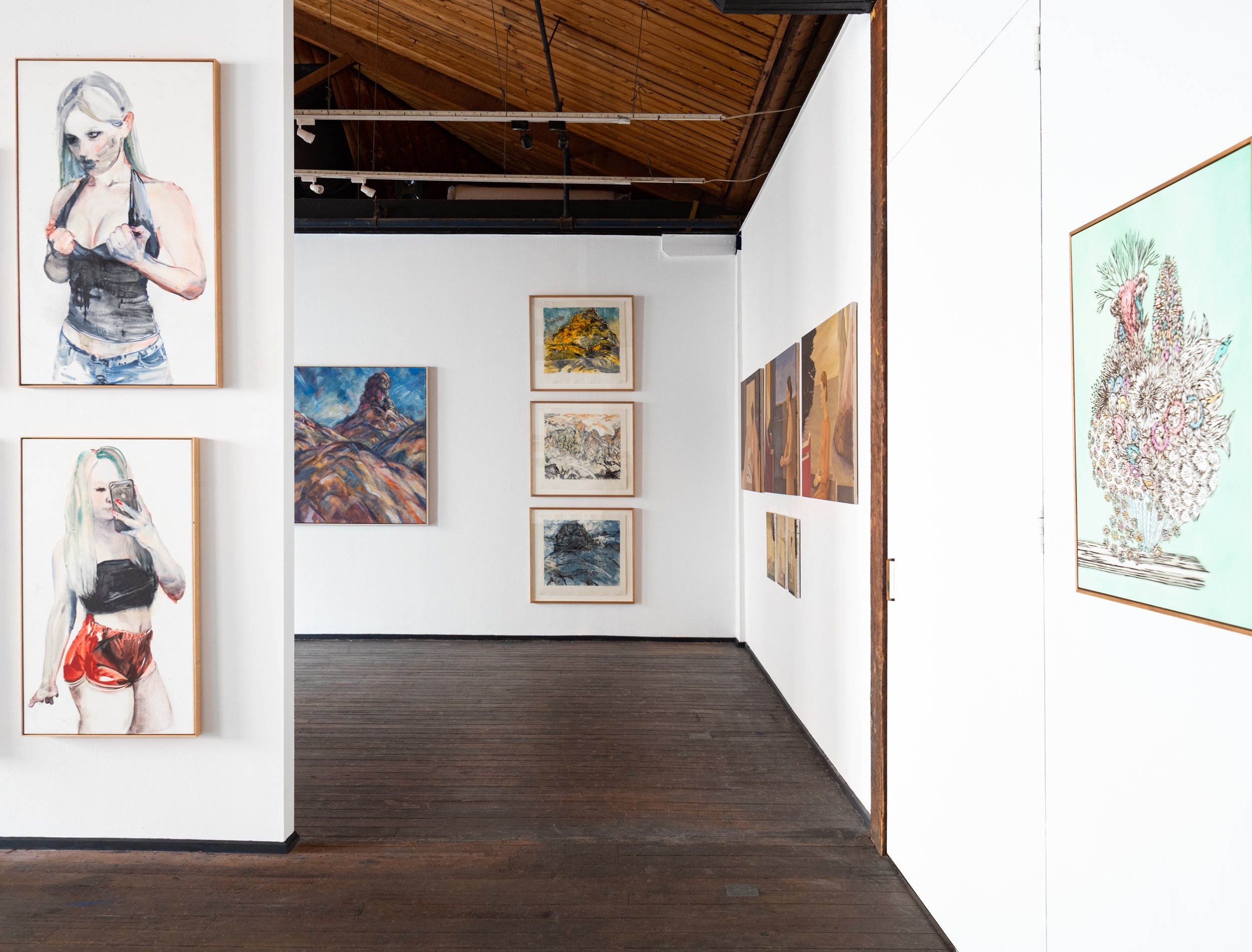SQUARE OF SUNLIGHT
CURATED BY HELEN GORY
13.08.21 ~ 29.08.21
Featuring: Jill Kempson, Fiona McMonagle, Pia Murphy, Amelda Read-Forsythe, Tai Snaith, Katie Stackhouse, Jacqui Stockdale, Steph Storey, Susan Wald, Deborah Walker
There is an ancient Kabbalistic story that tells of the relationship between light and dark. Before time as we know it, the divine drew breath and with it came darkness. Ten vessels were then filled with holy light to pierce the dark, but they were too fragile to hold such power and so they shattered, scattering the holy light like stars across the lands. And so now, in an imperfect world, shards of light can always be found. What is broken always carries the hope of being made anew.
We are living in the wake of a collective exile of sorts, a pandemic that has upended what we have known and shown the dark fault lines in our societies both local and global. Our worlds simultaneously, paradoxically, expanded through digital connectivity and contracted to the bounds of our homes, our streets, our local communities. Constraint, though, can be a fertile place; as with the shattered vessels, light always comes in the wake of darkness.
More than ever, art is a place of sense-making, of meaning-making. A means of both provocation and consolation, for ourselves and for our communities. The ten artists chosen here are all local women working in painterly forms, artists whose diverse practices have been shaped this past year by the limitations (and freedoms) of the global pandemic—shaped by home, children, domesticity, solitude. In remaking the familiar, in the details of life, art can be a way forward to collective hope, the promise of a future unbounded, pierced with light.
- Helen Gory and Sarah Gory
The title Square of Sunlight is borrowed from Judith Wright’s poem ‘The Sisters’ (1949)
Deborah Walker - Cypress Isle
Deboraw Walker imbues her paintings with a philosophical and metaphysical focus. Deceptively simple on the surface, easy on the eye to enjoy, yet there is a mysterious aura that immediately draws the viewer in. The subdued colour palate has clarity, the uncluttered composition conveys a sense of calm. And yet, there is movement. We sense an undercurrent. Typically, Deborah’s figures are in the act of doing- reading, walking, drawing, carrying, crying, writing, thinking…. surreal yet embedded in reality… thoughtfulness and contemplation.
Deborah masterfully creates a dream like quality, where her subject is seen in action, but the person or the scene cannot be fully understood. As in true life, we don’t even know ourselves most of the time. A theatrical sense of drama, where the characters are beautifully dressed, with melancholy, are reflective, and they have soul. The visual clues are scarce, uncluttered, where surreal worlds blurr the lines between reality and imaginary.
The imagery is framed around a personal narrative, one that examines the female experience. She does not envision people and events as fixed entities in a measurable world. Rather that these figures can be seen as things entwined in mysteries, ones that are seemingly resistant to be fully known or understood. While the ultimate truth of these chronicles may be unknowable, her enigmatic imagery offers a unifying vision of enduring solace.
“My paintings are often about the unspeakable, unnamed thing, often the most commonplace thing can be troubling.”
Katie Stackhouse
Granite, solid, hard, cold stone, impenetrable. This series of paintings were created on site partially performative and partially documentary. Their scale reflects the site as also the relationship to the human body. Allowing the nuances of the landscape to attract her attention Katie has embedded herself in an immersive and feminine relationship to the landscape. The resulting images have an etheric quality. The lines and shapes shimmer and glisten. Katie has visually translated what is unseen. Rather than gazing AT the landscape, she has rolled along the canvas horizontally, allowing multiple viewing planes, “many viewpoints.” To paint from the perspective of the landscape, the rocks, the water, the sand, the flora, Stackhouse describes an “embodied entanglement.” An enquiry, inversion and review to the colonial patriarchal traditions of landscape painting in which "nature" is "other”. Katie observes, “That which is belonging to nature can enrich our human perspective.”
To complete the documentation of the landscape, Katie has created a manuscript of black and white cropped photos of GRANITE rocks juxtaposed with stream of consciousness poems under these nine headings: BONES OF LABOUR, QUARRY, FOUNDRY, CASUARINA BEACH, RAKALI, GRANITE-BOOK, PHYSICS OF REALITY, ARUNACHALA, INTERNET WEB. These emotive, textural words describe the land from all aspects, the nurture of nature, the smell of nature, our entanglement with nature, our love of nature and sadly, our abuse of nature.
“I think about my own experience of recently becoming a mother and how that centred my own animal / mammal-ness / naturalness as a means to do the practical and essential tasks of mothering a new baby. I found everything about that role - from labouring and birthing, to breastfeeding and letting go of neo-liberal constructs of time, was essential to understand what I needed to do for the growing of my child and in turn it gave that deeper insight into the human family of things, that all humans have been born from a body, that the elemental forces that make up our bodies all materially come from nature.”
Tai Snaith - Impossible Bouquet.
Gouache, watercolour, still lives, flowers, ceramics- all things associated with women painters and historically not taken seriously by the institution or the textbooks. These new works on cotton rag by Melbourne-based polymath Tai Snaith knowingly nod at this sexist history of exclusion of women from the canon of painting. They depict Snaith’s surreal, ominous, hand-built vessels made from mid-fire ceramic, black as soot, holding weeds she has collected from the Merri Creek near her home. The title of the ongoing series ‘Impossible Bouquet’ refers to the C18th Dutch still-life genre painting convention, where we see unified still life arrangements containing dozens of different flowers, picked from impossible combinations of growth locations and seasonal blooms - that could never have existed in reality at the time.
To achieve these compositions, artists such as Jan van Huysum would gradually complete works over the course of one or two years, as the necessary subjects came and went out of season. For Snaith, making these ceramic sculptures and then painting them is a similarly slow and impossible process that she chips away at between other work she is making in the studio and daily life as a mother and caregiver.
On a personal level, the term ‘Impossible Bouquet’ reflects the incredibly difficult balancing act of caring for a family, the act of radical acceptance in embracing the dark side of domesticity, emotions around making a living and making art. On the flip side, these works also celebrate the joy, hope and sense of purpose a practice can bring to one’s life, especially during lockdown, amid a pandemic.
Susan Wald - Mungo.
This series of paintings and monotypes are a small set of a larger body of works inspired by Mungo, south-west NSW. In these paintings Wald has shared the emotional pull she felt and the compulsion to return over and over.
Dr. Thomas Middlemost spoke of Wald’s work when opening her show at The Mildura Arts Centre. ‘These are pictures for our time. Pictures that are refined by time. They are thoughtful, and speak of death and birth in one. They speak of the end point of the Australian landscape, the dry, desolate, final images of one of the worlds driest continents.’* In the style of a portrait, Wald’s landscapes have structural firmness and yet we feel overwhelmed with a sense of desolation. She tries to capture something of the essence of the beauty, pain and history that permeates Mungo. With bold and searching brushstrokes there is movement and space within and beyond the landscape. During this time of epidemic where there is isolation and loneliness there is time to think about this powerful country we all call home.
‘I believe that painting in the twenty first century is a potent medium, one that is able to speak about and reflect on our time in a powerful way. In my work I try to express something of the quality and subtlety of what it feels like to be human.’
Amelda Read -Forsythe - Twelve Months of Flowers.
Inspired by the work of Robert Furber’s (1674- 1765) etched series Twelve Months of Flowers, I explore the notion that ideas, like energy, never die, instead just shuffle their once-position into a different arrangement. In my series of twelve paintings, by the same name, I have included some of Casteels’ European flowers, interspersed with Australian indigenous plants and newly discovered species from around the world, each bloom in the specific month that I ‘arrange' them within.
With an interest in theories such as Foucault’s Historical Systems of Thought, I endeavour to navigate through and repurpose visual history derived from enlightenment thinking and enquire into that unsettled space between propositional ideas and imbedded beliefs. By making and realising paintings I consider the appearance, demise and reformation of ideas, as contained within visual artefacts, and propose my own arrangements of newly formed, unsettled configurations.
Furber adapted the paintings of Pieter Casteels III (1684-1749) in order to make a series of etchings that would serve to sell seeds. I’ve taken cues from the historical roles of drawing and printmaking to concretise and disseminate one way of knowing the world and invent a painting process employing brush and rag accrual and removal of paint that asserts the painted mark as neither quite painted, nor drawn or printed, but somehow, of all three modalities at once.
The paintings are propositional moments of congregation - new and old, here and there - now found in one painted place and altogether making something worthwhile of their current assemblage.
Pia Murphy - The Garden.
During the 2020 lockdowns Pia started planting- seeds, cuttings, vegetables trees, flowers - planting and planting. Continuing to paint and sculpt, it seemed logical and felt natural to paint En Plein Air. The wilting sunflowers and the trees she had planted became a source of solace, and the garden became her studio. Being in the garden was akin to being inside her home. Knowing each single plant intimately, watching them grow, blossom, bear fruit and wither.
So, it is this intimacy and sense of nurture that is captured in her appropriately smaller scaled paintings. You can feel the sunlight reflected in the canvas. Similarly, the interiors and figures are infused with warmth, familiarity and safety. This is domesticity in its glory. It’s what we all crave. We are all too aware of just how important it is to have a home with loved ones and nature to be your safety net. With a Joire De Vivre attitude, these paintings shimmer with colour, love and natural rawness. What you see is what you get. There is in these paintings, hope and joy, and a proudness to being immersed and satisfied with ones’ life as it is now.
“Going forward into 2021 I have moved into my own separate studio space and continue to experiment with both the observational work, still using the garden as the subject and the more abstract memory paintings on a larger scale. “
Jacqui Stockdale - Don't change a hair for me.
I have a growing desire to make instant portraits, or to let them make themselves. Working in water colour is tricky, it takes the rug from under you. I like to work from a model, in this case a life-size sculpture assembled from found objects. I called it, Ah Man, a hybrid of Colonial Irish and Chinese descent, a bushranger in a dress, her/him/they. It is part of a recent series. The Long Shot, 2020, where for the first time I created a large multi-media diorama examining the glorification of Australia’s anti-hero Ned Kelly. Making portraits based on the one character means you create instant ancestors, brothers, sisters, black sheep and throw backs.
Arcana Rogue.
Much of my work delves into dark and knotty Australian colonial histories where I invent a melange of hybrid characters to re-examine the stories I was told at school. I live in Melbourne but I grew up in North East Victoria, so the Ned Kelly myth seems a fitting place to start. The act of making new characters is partly guided by the subconscious and in some realms, the surreal. Mexican born artist, Leonora Carrington’s work is endowed with subliminal iconography and visions of the ‘marvellous’. The tarot fascinated her so much she created her own version of the pack. This stunning series of 22 works focusing on the major arcana inspired me to begin the journey towards my own version. Each card deals with the human condition, representing the joys and sorrows of humankind. I started with The Devil, The Hanged Man, The High Priestess and Death as I could recognise these archetypes most obviously amongst the mix of bushrangers I had made, The High Priestess being Mrs Ellen Kelly, the hanged man was Ned, the Devil and Death; very easy to find if you know my work.
The 22 paintings in Arcana Rogue, represent several of the major arcana archetypes but not all. Some go off the beaten track as I realised, I was not versed enough in tarot to go the whole way. Made during numerous lockdowns and painted mostly from life from the repurposed dolls and props that fill my studio, I present a rogue version of the Major Arcana in watercolour and ink. I hope this to be the beginning of a full set of subversive major archetypes that transgress the boundaries of the colonial vernacular and offer the viewer a chance to pick their own card and imbue it with their own meaning.
Jill Kempson.
In ‘Essays on Painting’ Siri Hustvedt says, “hours may pass but a painting will not gain or lose any part of itself. Jill’s love of painting aligns with the immutable stillness. Paintings seem to exist outside of time in a way no other art can. Jill’s intensely close examination of - the zooming in the parts, rather than the whole - symbolizes the looseness of time. It has no beginning, no middle, no end. It is now. These paintings are like glorious mediations. With her skills as a colourist and composition, the vibrancy of the paintings seem to emanate an inner glow, one feels to melt into the flowers as they are quiet, strong and yet gentle- they are in their own world and open to let others in. With the ability to observe so acutely, Jill’s portraits of flora...capture an essence we all want- to be still and calm, amidst calamities.
“A painting can create an illusion of an eternal present, a place where my eyes can rest as if the clock has magically stopped ticking. The theme of the eternal present is a reoccurring concept in my art practice. I believe we are moving into a different paradigm where time and perceptions of what is important are shifting. A slowing down, which will hopefully allow a re-evaluation, resulting in a renewed reverence for the natural world and in turn an overpowering need to preserve/reset our planet.
Since childhood I have sensed the ever-present power and beauty of nature in our world. It is and has always been my intention that my art practice is concerned with the transmission of this power and beauty. During the quiet of the long lockdown period in Melbourne I started painting large floral works. These paintings became a way of expressing a more intimate inner world of forms, which have enabled me to relate on a more emotional level than with my landscape paintings.”
“Through return to simple living comes control of desires. In control of desires stillness is attained. In stillness the world is restored.” - Lao Tzu
Fiona McMonagle - Classy.
Fiona’s works can be interpreted as a contemporary version of social realism, wherein, she is more focused on the internal and external influences that drives an individual. Rather than the socio-political realities, Fiona’s keen observations of her subjects, which are predominantly female, have a universal relevance. Whether it’s the girl next door, young children, groups of teenagers, individuals, celebrities or older women, the subject fills up the canvas. The figures loom over us, with a certain grittiness and sense of power. We are confronted and forced to ask the questions she wants us to ask: how do we feel about strong independent females: how do we feel about older women, young girls that flaunt their bodies, celebrities that immerse themselves in popular culture? At the same time these women appear powerful and confident yet vulnerable. She allows the viewer to see are who they are, unashamedly and without apologies.
Fiona’s skilfully renders her figures with blobs and bleeds and spills, and with a translucency within the colour palate that cleverly enhances a fluidity, a sense of movement and quickness. We see the subject, we feel the rawness, yet unable to grasp any more nor get a deeper understanding. McMonagle challenges us in presenting powerful narratives of older powerful women as well as the young and youthful. They can be fragile, feminine, strong, independent and vulnerable, most importantly they are human. Classy, not without its ironical humour, is a powerful look at the troubles and daily grind that women of all ages confront. These paintings are without judgment or sentiment. They are quintessentially of the now, daughters of the internet equally exposed and exposing.
Steph Storey - Portraits.
These mixed media portraitures, by Steph Isolde, as in the tradition of fine art, are detailed, composed and nuanced. The observer can feel the artist enjoys the challenge of capturing her subjects’ emotion and their story. “I believe that portraits can tell a story - that they can form part of an important narrative around cultural issues, inspire, and evoke strong emotion.”
Her distinct use of line depicting the face, the hands, eyes, wrinkles, hair and skin is profound. Using brown paper pasted on board or cardboard her works are pasted in alleys and lanes in the northern suburbs of Melbourne. This juxtaposition of the refined portrait pasted on the streets on paper only serves to emphasise the raw power of her portraits. Portraiture has a long history in art with the most celebrated and famous art works being portraits. We humans like to look at ourselves, and we like to stare at others. The portrait artist gives us this opportunity to do both undisturbed. There is an endless fascination with portraiture, now fashioned into selfies and instant gratification through digital technology. However, a drawing or painting holds a different aesthetic that keeps us endlessly captivated with traditional portraiture- take the popularity of the Archibald for instance.
“Throughout the past year I've found I’ve really leaned into my art practice, held onto it like a lifeline. Having the ability to continue creating even as the world seemed to be closing in around us provided me with a source of strength and hope. The influence of Covid and the lengthy lockdown has created a shift in my work. I think I’m searching for ways to convey the sense of loss we felt, but also honour the resilience and courage that arose because of it.”
“Every portrait that is painted with feeling is a portrait of the artist, not of the sitter. The sitter is merely the accident, the occasion. It is not he who is revealed by the painter: it is the painter who, on the canvas, reveals himself.“ Oscar Wilde.
























































